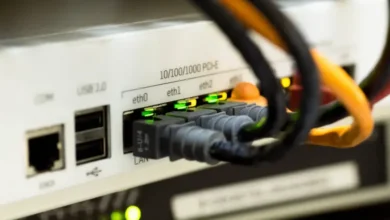Emerging Technology Trends in Higher Education
The coronavirus pandemic of 2019 has brought about a major number of lifestyle changes, and education is no exception in this case. There have been numerous significant shifts of modes, syllabi, and modules for higher education, and this has paved the way for more changes in terms of pursuing higher education. In this article, we are going to talk about all the emergent technology that plays a vital role when it comes to higher education.
Classes have already begun in an online mode, and educational institutions have started contemplating whether they would let students have a choice in attending classes remotely. Similarly, this pattern of allowing a choice of modes (online and offline) ushered in an economic aspect of courses, i.e, institutions might move toward varied course pricing which would be different for online students and offline students. That being said, let us dive right into the technological trends that we can see in terms of higher education.
Changes That Can Be Seen
This section will deal with the trends that can be observed globally when we speak of higher education like colleges, universities, and the like. These are as follows:
- The proliferation of Artificial Intelligence: the usage of artificial intelligence has grown with leaps and bounds during the pandemic, hence proving the well-known proverb of “necessity is the mother of invention”. Despite that, almost everything that happens in the digital landscape is powered by artificial intelligence. Beginning from management systems, student portals, grading tests as well as library services. The continuation of artificial intelligence is of great importance since the next generation of students will be very used to AI in almost every facet of their lives. Such a scenario might push educational institutions to equip themselves to face any deviations in terms of the digital media in order to adapt to the changing times.
- Usage of Data Analytics: The entire process of collecting surveys and data has begun during the coronavirus pandemic and now educational institutions are treasure troves of multiple data. This data could be utilized in learning various educational trends as well as understanding what the general mindset of the education sector is. With the increase of AI-powered technology that has boomed after the pandemic, data scientists have gained an extra impetus in studying the data collected by these institutions and predicting a lot of situations.
- Blended Modes of Undertaking Courses: Like we already mentioned how students have an option to attend classes either in an online or on offline mode, this is paving the way to a hybrid classroom program. For example, math classes can be attended online, and a lot of other courses can be attended physically. The hybrid model is here to stay even after the coronavirus pandemic becomes ancient history, and this has the potential to change the way people view academics in general.
- Increase in Open Sources: The pandemic has also increased the demand for a number of open-sourced resources and a lot of them have been cropping up. Open-source resources are basically reference and academic materials that are available freely on the internet without having to pay for getting access to them. These materials can be texts, videos, presentations, or any media and digital materials that can ease the teaching-learning process.
- The emergence of Micro-credentials: Micro-credentials are short certification courses that mostly help in building certain skills that increase an individual’s employability. It could be learning a new language, or something similar, like certification in digital marketing. The duration for these courses is shorter than a traditional degree course, and have more flexibility on part of the students. These micro-credentials could be in terms of certain ‘boot camps’ or ‘badges’ for platforms such as LinkedIn, or any other programs that are accredited by universities.
- Investing in Online Education: Many establishments in higher education are now progressing beyond emergency virtual learning. Many organizations are heavily investing in high-quality online learning packages, such as 3D hotspots, which were used to develop numerous superb modules that imitate labs and museums. Several of the issues connected with the epidemic may be establishing post-secondary studies in a more fluid and egalitarian place once the pandemic dissipates.
What Do You Think About It?
Well, our thoughts are extremely simple, you have to adapt yourself to the changes that are present during the times, or else you will become obsolete too soon. And, the romanticism that surrounds engaging with the obsolete is an individualistic obsession rather than being practical. Hence, educational institutions will morph themselves as per the changes that are taking place as time goes forward.




